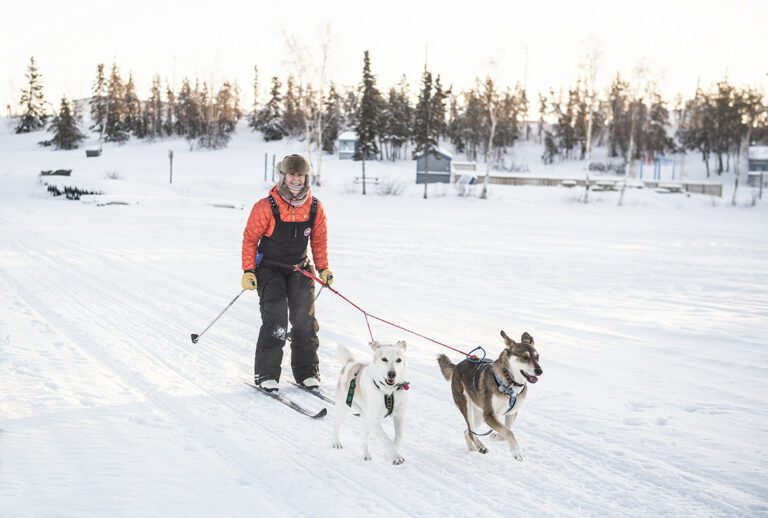Most research around rentier states revolves around the question of why they seem to be underdeveloped economically and democratically, compared with other nations of similar income levels. Given their natural advantages, an economist’s expectation would be the opposite. Why are so many rentier states undemocratic with poor gender equality?
For one, rentier states face a greater potential for corruption than democratic market economies. While some risk factors in corruption are specific to petro-states with state-owned oil companies, one issue all rentier states face is the source of their income. Without the link between paying taxes and receiving government services, the connection between citizens and the government is indirect, and that lack of accountability can lead to undemocratic behavior. This is one of the reasons so many autocratic governments are tolerated in petro-states.
The GNWT relies on taxes for less than 20 cents of every dollar in its budget. In contrast, the inverse is seen in the 10 Canadian provinces, which receive on average 80 cents out of every dollar of revenue from taxation and fees for services provided to their residents.
This source issue can lead to excessive lobbying and transparency issues. Meanwhile, the public service’s stature as key employer adds to political pressures to distribute jobs in ways that have less to do with merit.
According to current research, rentier states display a common group of characteristics as a consequence of their structure:
• The government is the largest and the ultimate employer
• Citizenship has financial value
• Economic activity shifts away from other tradable industries, and there is overheating in the non-tradable industries
The government as the largest employer
Of the 21,900 people employed in the NWT, the GNWT employs 5,450. That’s one out of every four employed people. Elsewhere in Canada, provincial or territorial governments employ 15 percent. An additional 16.2 percent work for another level of government, which puts the public service just over 40 percent in the NWT, while Canada-wide that number is 22.7 percent.
Citizenship as a financial asset
While a strong argument can be made to support affirmative action hiring for historically disadvantaged groups, it is hard to see “Indigenous Non-Aboriginal Persons” (commonly referred to as P2) as a disadvantaged group. In fact, we have the inherent advantage of familiarity with the North, and we are the most sought-after employees in most Northern industries. The P2 category forces the public service to compete with itself and offers financial benefits to those with the good fortune to be born in the North.
(Incidentally, if we are serious about lowering the cost of living, the last thing we need is a lot of protected industries, and yet here we are with a protected labour market, both in the public sector through the P2 category and in the private sector through BIP.)
The situation is amplified by Impact and Benefit Agreements and their demand for Northern hires. A large proportion of NWT residents are also owners of the various birthright corporations operating in the North.
Other financial benefits also accrue to longer-term NWT residents. The NWT Student Financial Assistance Program offers larger benefits to residents who have lived in the NWT longer before post-secondary school, and it forgives loans after a student returns to the North for a minimum period.
Yellowknife fever revisited – overheated non-tradables
Because the NWT is a rentier state, it has a tendency to inflate the importance of the industries receiving rent (government). This leads to growth of the non-tradable industries (construction) at the expense of the tradable industries. As a consequence, the construction industry doesn’t see profits by developing new supplies of housing for either businesses or people.
Magnifying this effect is the other main source of external income to the NWT economy – extractive industries like mining and oil and gas – which also provide growth in non-tradable industries at a further expense to tradable industries.
The problem is further compounded by the fact that government policies designed to support the NWT economy provide financial incentives to all industries through the BIP program and negotiated/sole-sourced contracts, including those already overheated non-tradable industries such as construction. Mining companies have signed a series of Impact Benefit Agreements, with the same results.
Meanwhile in the labour market, the largest employer, which pays 25 percent of the workers in the territory, has placed restrictions on itself, driving up its own wage rate and indirectly affecting wages in other industries as well.
We started with the question of how to lower our cost of living, and we have followed that trail all the way through the structure of the Northern economy. Our expensive lives will not be lightened by simple fixes like subsidizing the Power Corporation in a dry year. The cost of living is a systemic issue that will require fundamentally changing the NWT economy, with all the transition costs that entails.
My hope is that this series will help inform discussions around Northern dinner tables and in the media with a higher standard for evidence. At the very least, any such discussions should be based on well-established economic principles and data. Without these, we will continue to reach blindly for solutions to problems we simply don’t understand.
This is the final installment of this series.
Part One, Part Two, Part Three, Part Four and Part Five
This Article Is Part of a Series
Previous: NWT’s Economic Realities, Pt. 5: Is The NWT A Rentier State?







